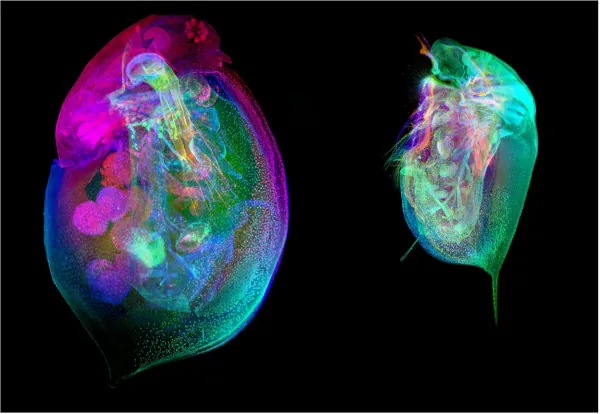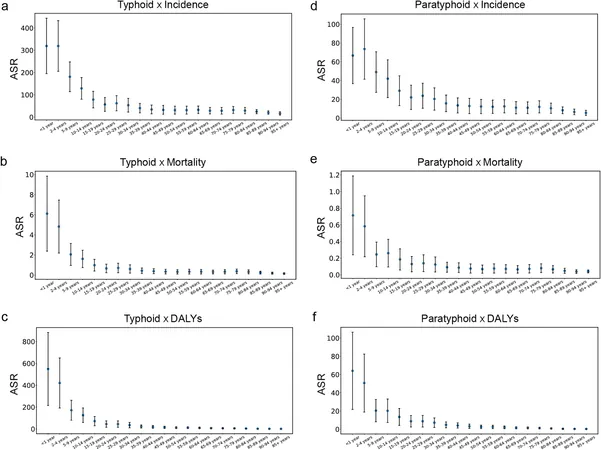
Breaking New Ground: The First Daphnia Histology Reference Atlas is Here to Change Environmental Research Forever!
2025-01-09
Author: Wei
Introduction
In a groundbreaking development for environmental science, researchers from Penn State have unveiled a pioneering web-based resource known as the Daphnia Histology Reference Atlas (DaHRA). This innovative atlas focuses on Daphnia, often referred to as the water flea, a vital sentinel species for monitoring environmental pollution.
Significance of Daphnia in Environmental Monitoring
Daphnia are small freshwater crustaceans recognized for their remarkable sensitivity to toxic substances in their habitats, making them essential indicators for assessing the ecological impact of chemicals. Traditionally, research on the toxic effects of chemicals has been limited to evaluating the organism as a whole.
Advancements with DaHRA
The launch of DaHRA marks a significant advancement, allowing scientists to study the specific toxic effects at the cellular and tissue levels. This new approach opens a treasure trove of opportunities for predicting adverse chemical impacts, a key step toward enhancing environmental health and sustainability.
Dr. Khai C. Ang, an assistant professor in the Department of Pathology at Penn State College of Medicine and the principal investigator behind this project, emphasized the importance of this work: "This atlas is the first open-access resource for the Daphnia community, equipping researchers to gain insights into normal microanatomy, thus enabling accurate interpretations of how environmental pollutants influence these organisms."
Creation and Features of the Atlas
The creation of the atlas was no small feat; it involved meticulous cutting, scanning, and labeling spearheaded by Dr. Mee Siing Ngu, the first author and DaHRA curator. The atlas showcases D. magna, encompassing both female and male specimens cut into three anatomical planes. This design facilitates the visual identification of specific organs and developmental stages, allowing users to delve deep into the intricacies of Daphnia's biology.
User-Friendly Interface
What sets DaHRA apart is its user-friendly interface, crafted by programmer Daniel Vanselow. This online platform enables seamless navigation and zooming into high-resolution images that come complete with standardized anatomical labels. Such accessibility promotes collaboration and knowledge sharing within the scientific community, benefiting not just environmental researchers but also educators and policymakers.
Implications for Human Health and Regulation
The visionary behind this project, Dr. Keith Cheng, a distinguished professor of pathology, biochemistry, and molecular biology, notes the direct relevance of this research to human health diagnostics: "In clinical settings, identifying molecular changes necessitates understanding cellular and tissue morphology. This principle is just as crucial in the fields of toxicology and environmental science."
Professor Dr. Luisa Orsini from the University of Birmingham added, "The histopathological insights provided by the atlas illustrate how harmful chemicals can impact specific tissues before causing noticeable developmental harm. By combining histopathology with molecular tools, we can refine toxicity assessments, paving the way for enhanced environmental protection and regulation."
Future Directions and Conclusion
The implications of the Daphnia Histology Reference Atlas extend far beyond its immediate applications. Researchers like Dr. Ang aim to integrate DaHRA data with molecular toxicological insights to build a comprehensive understanding of environmental chemicals’ adverse effects. As this atlas is expected to inspire similar tools for other model organisms, it stands poised to revolutionize the fields of ecotoxicology and environmental science, ensuring a healthier and more sustainable planet for generations to come.
Don't miss out on the ecosystem-saving innovations derived from the DaHRA—stay informed and become part of the movement toward clearer, science-based environmental protections!


 Brasil (PT)
Brasil (PT)
 Canada (EN)
Canada (EN)
 Chile (ES)
Chile (ES)
 Česko (CS)
Česko (CS)
 대한민국 (KO)
대한민국 (KO)
 España (ES)
España (ES)
 France (FR)
France (FR)
 Hong Kong (EN)
Hong Kong (EN)
 Italia (IT)
Italia (IT)
 日本 (JA)
日本 (JA)
 Magyarország (HU)
Magyarország (HU)
 Norge (NO)
Norge (NO)
 Polska (PL)
Polska (PL)
 Schweiz (DE)
Schweiz (DE)
 Singapore (EN)
Singapore (EN)
 Sverige (SV)
Sverige (SV)
 Suomi (FI)
Suomi (FI)
 Türkiye (TR)
Türkiye (TR)
 الإمارات العربية المتحدة (AR)
الإمارات العربية المتحدة (AR)